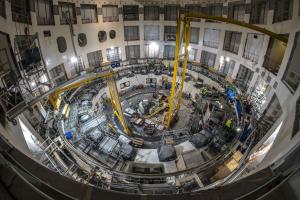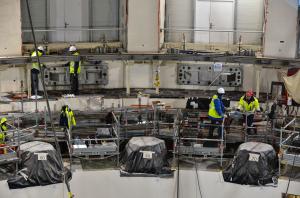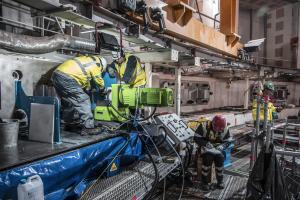Grand opening soon
Picture a giant soup plate, 30 metres in diameter, slowing descending into a deep concrete cylinder. Track the near imperceptible movement of the double overhead bridge crane, as it moves a few millimetres at a time to align the plate's rim with prepared supports 60 metres below. Feel the tension as the operation unfolds and the 1,250-tonne steel component eventually settles with submillimetre precision on the massive concrete "crown" waiting below. And mark your calendars, because what you have just visualized will be the opening act of ITER machine assembly this spring—the insertion of the cryostat base into the Tokamak pit.




